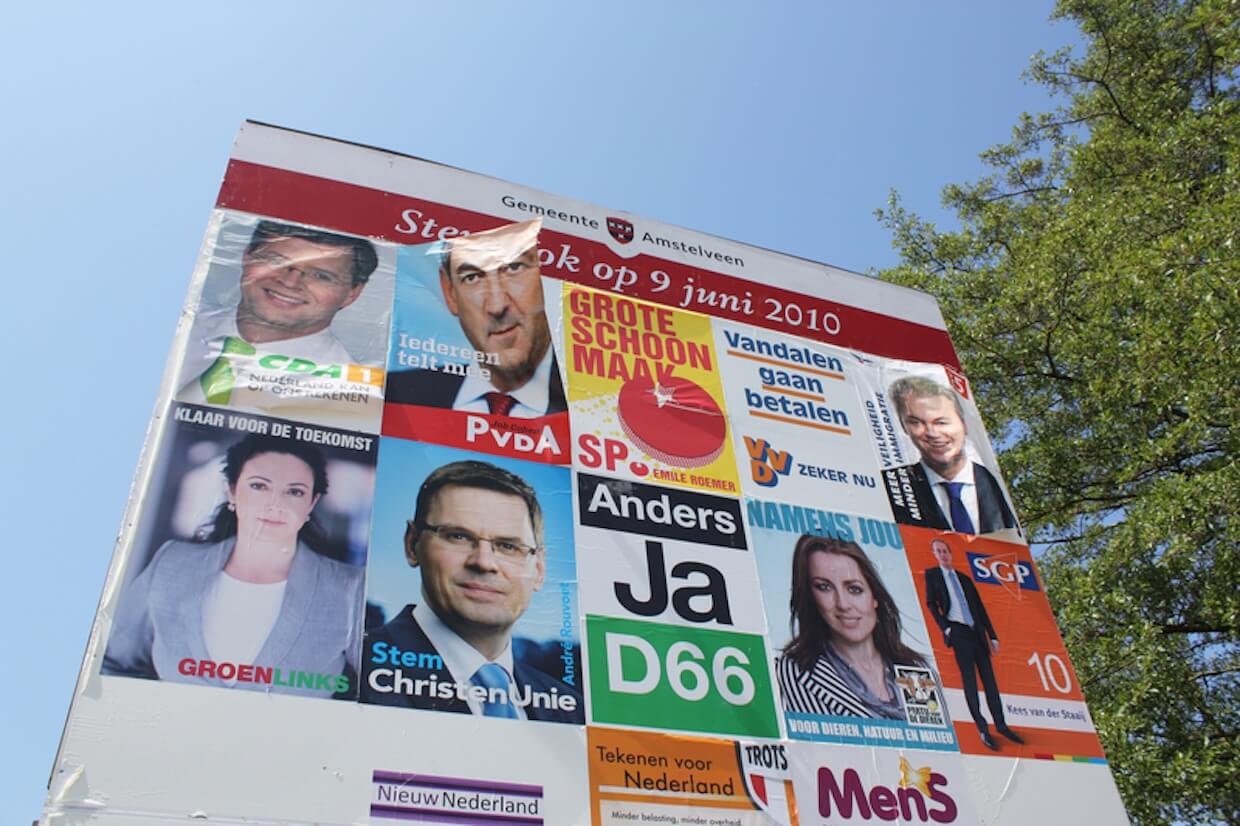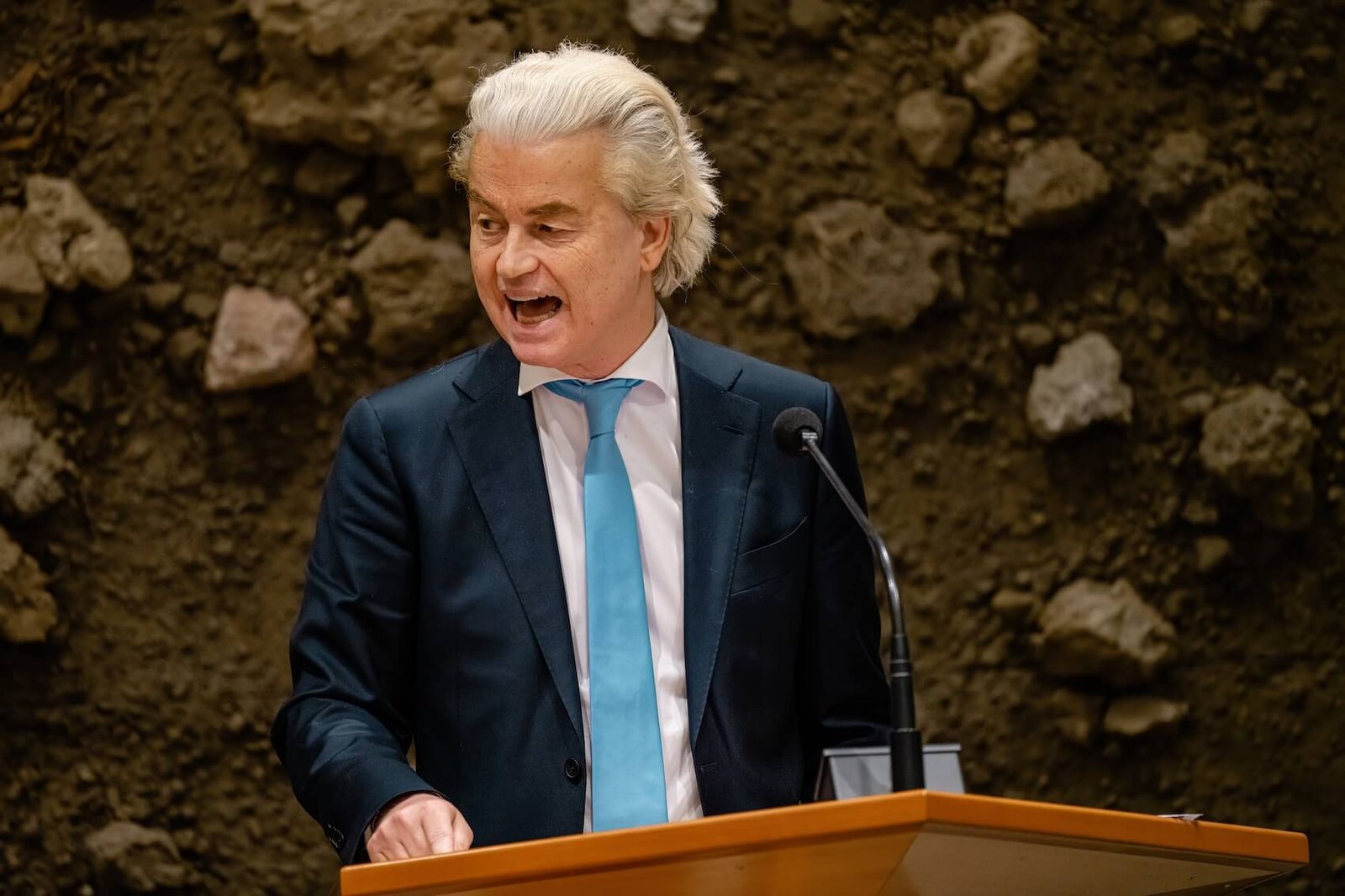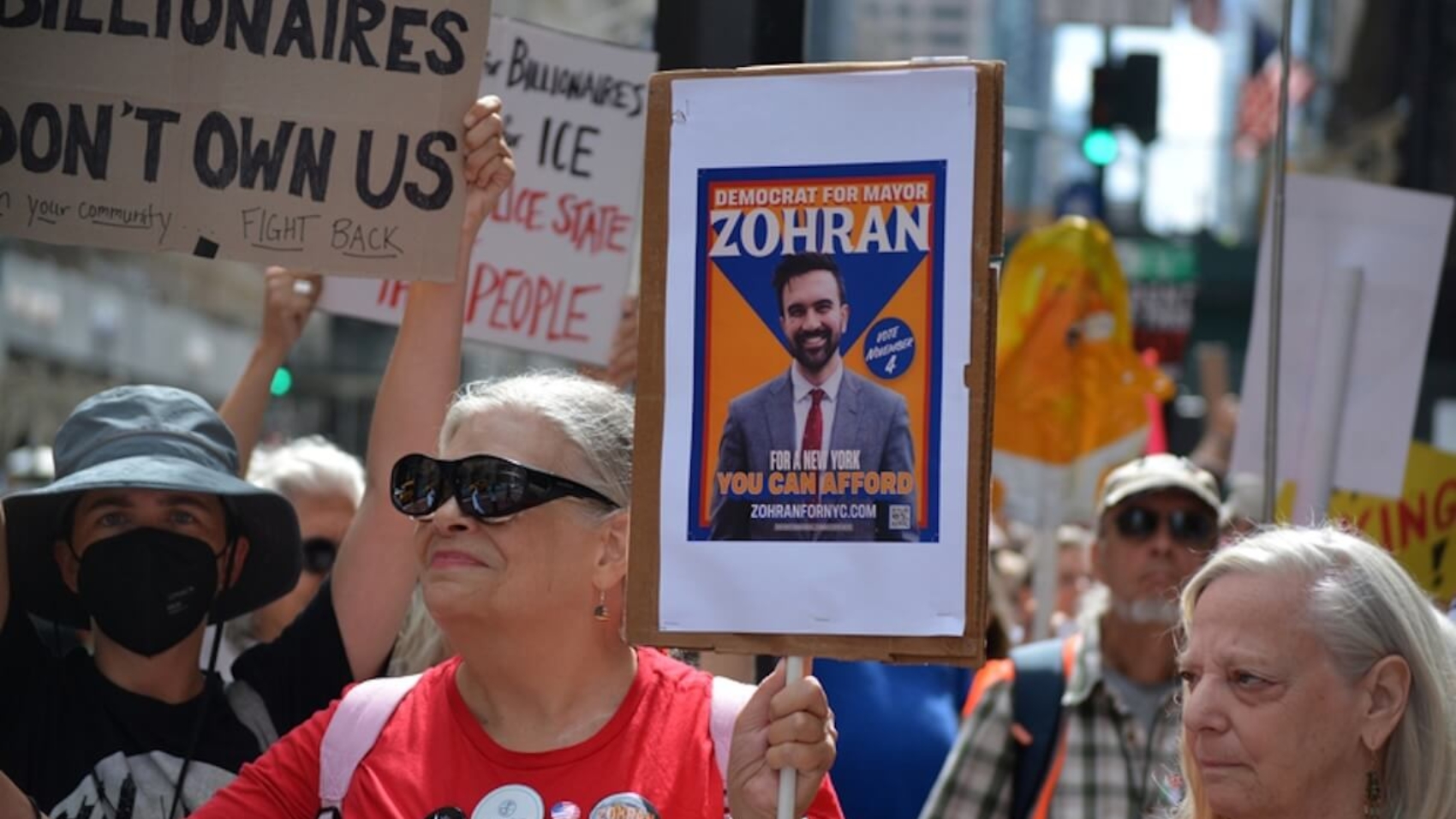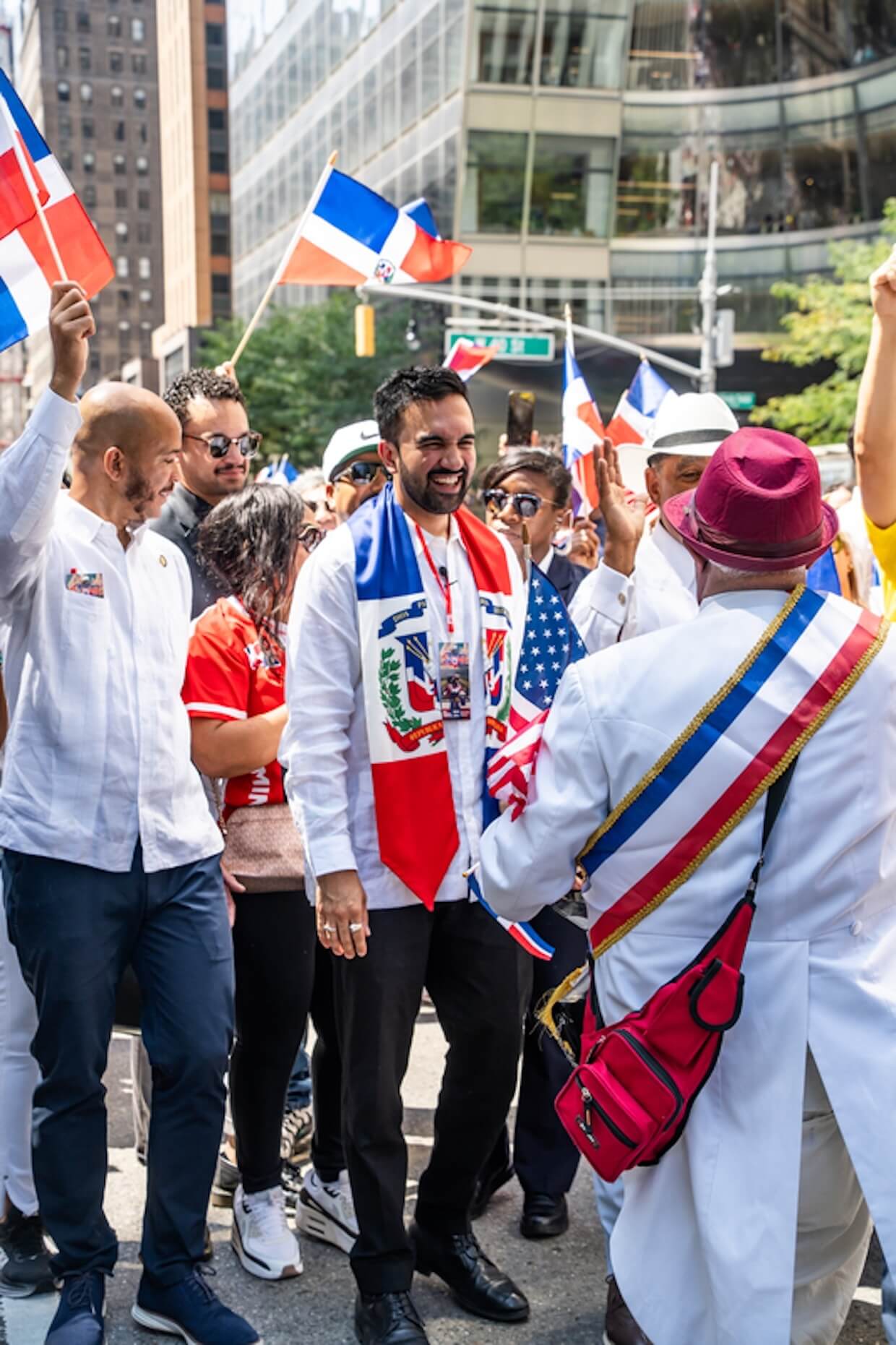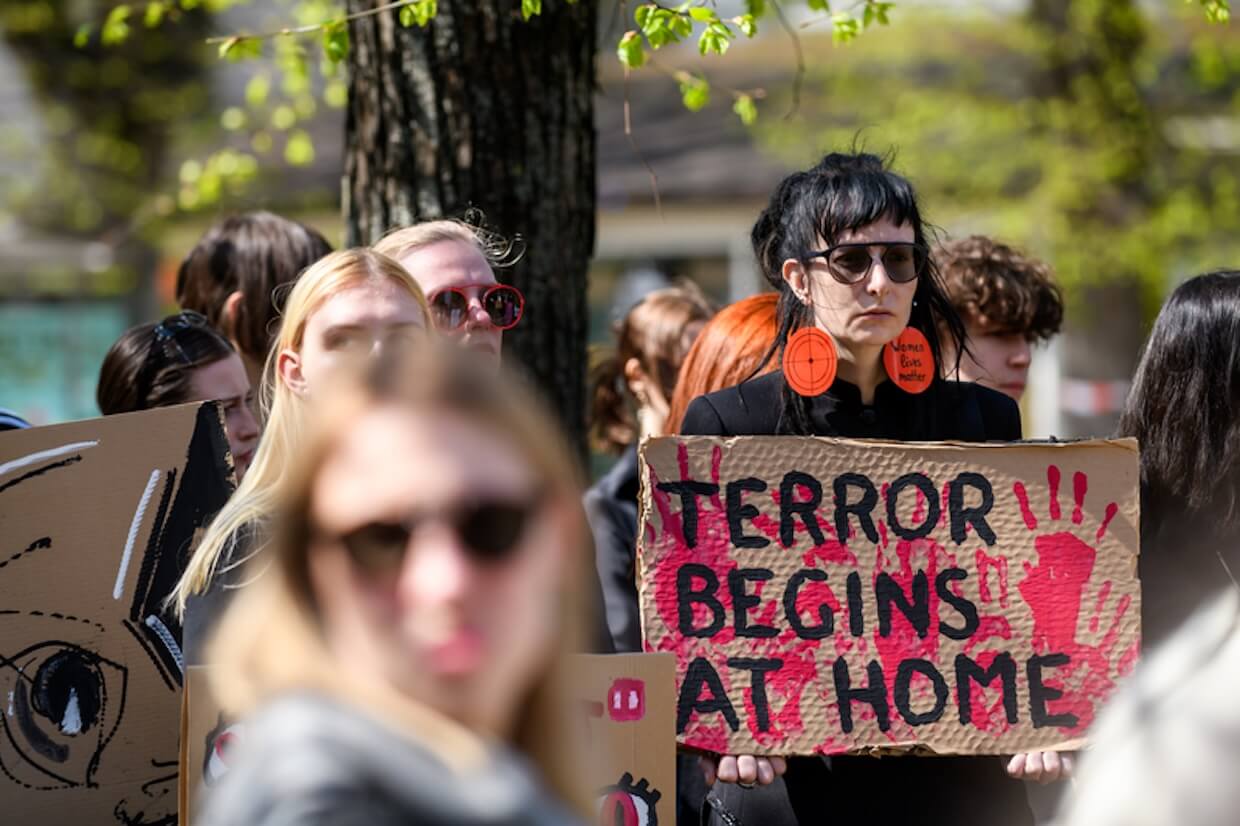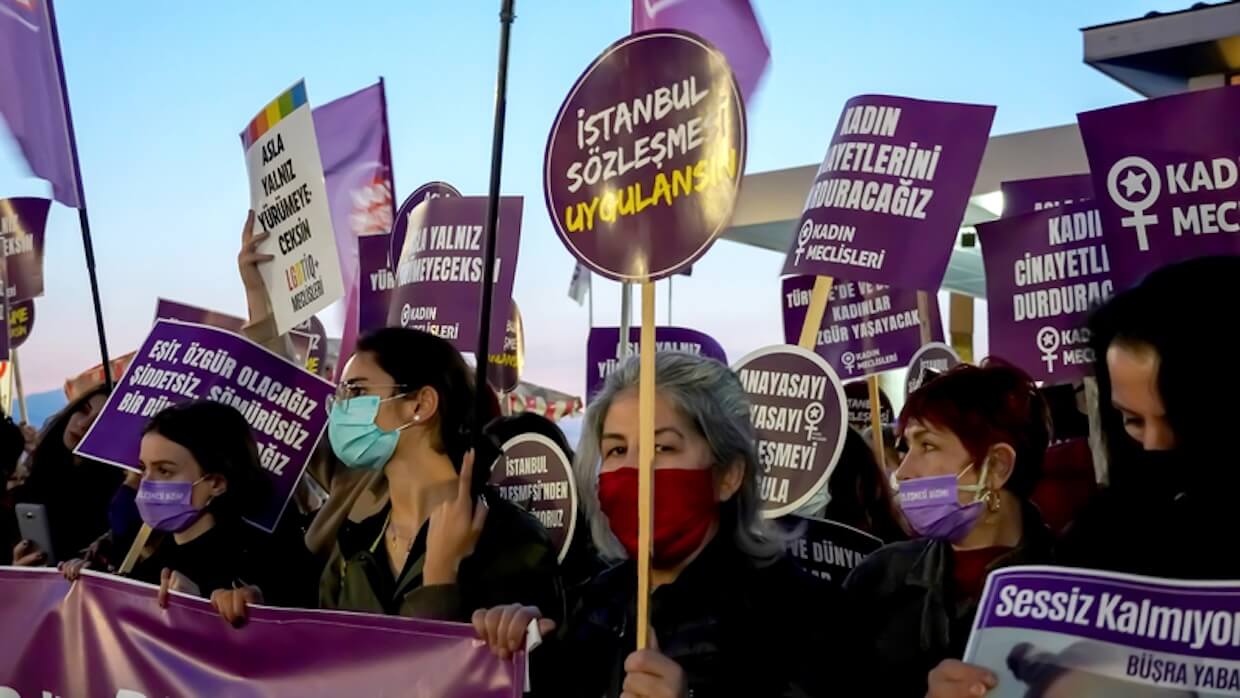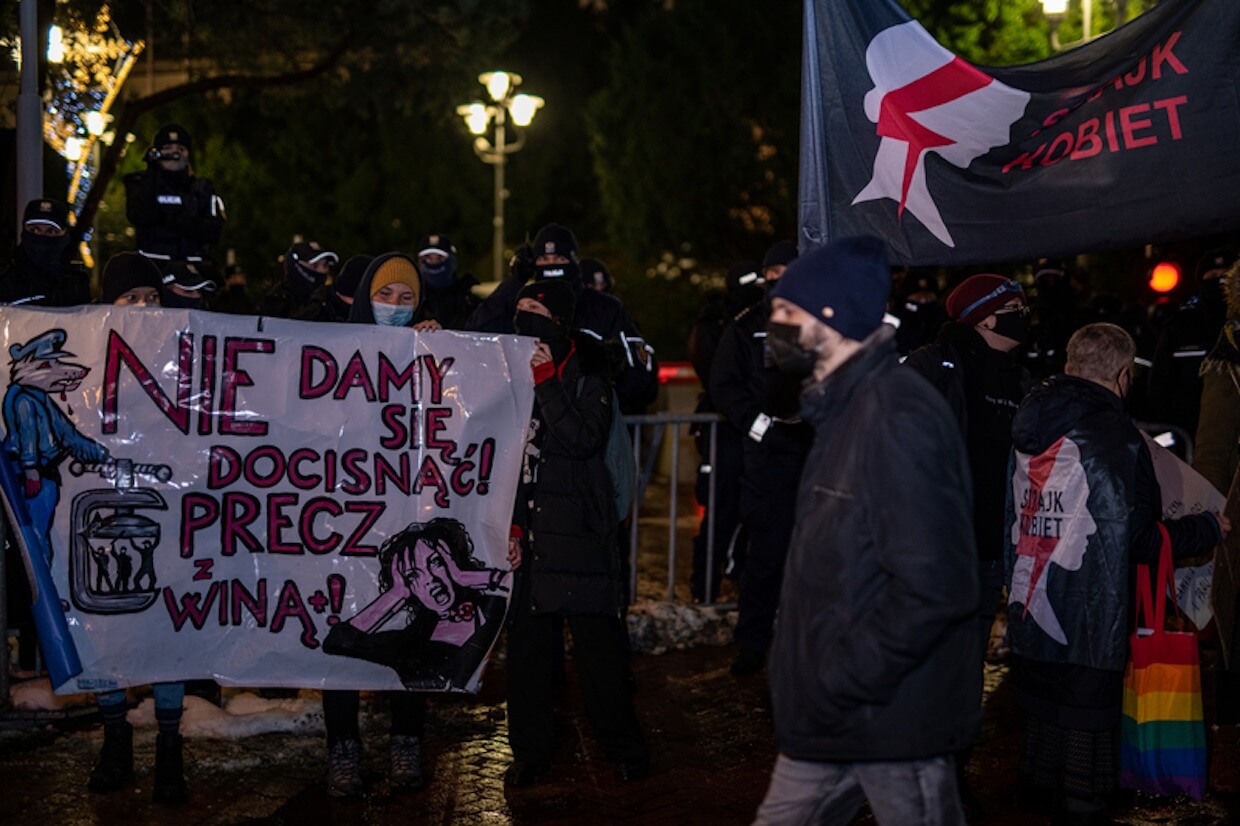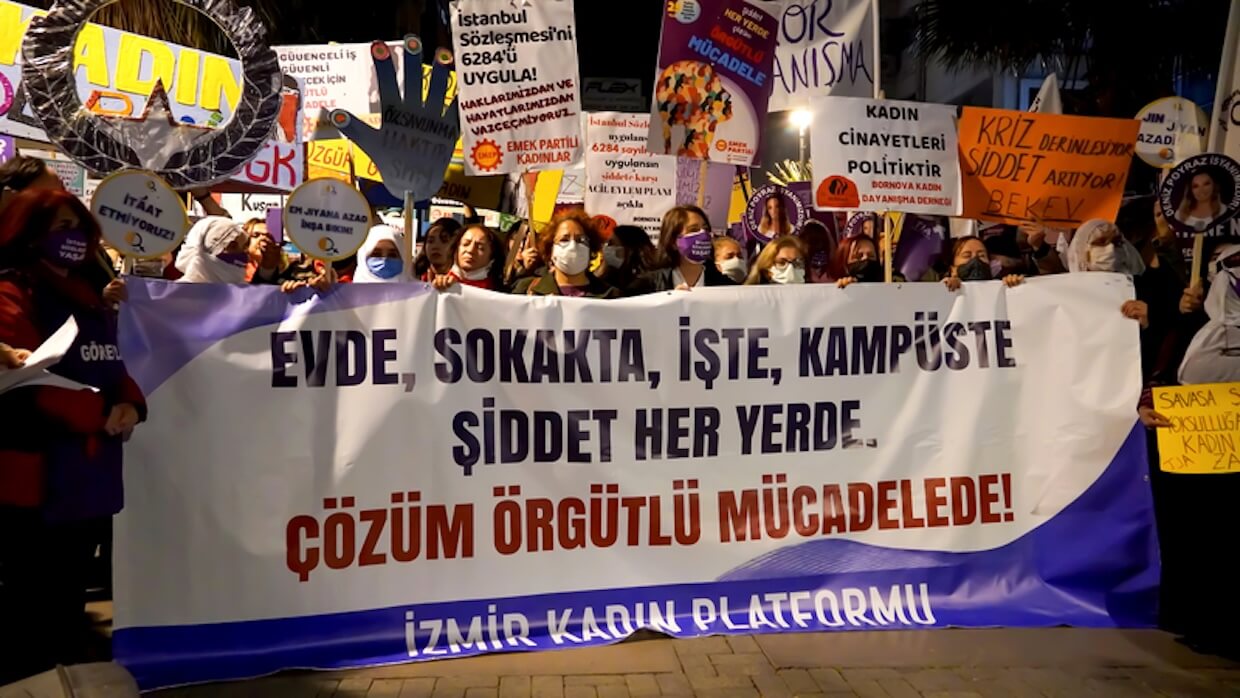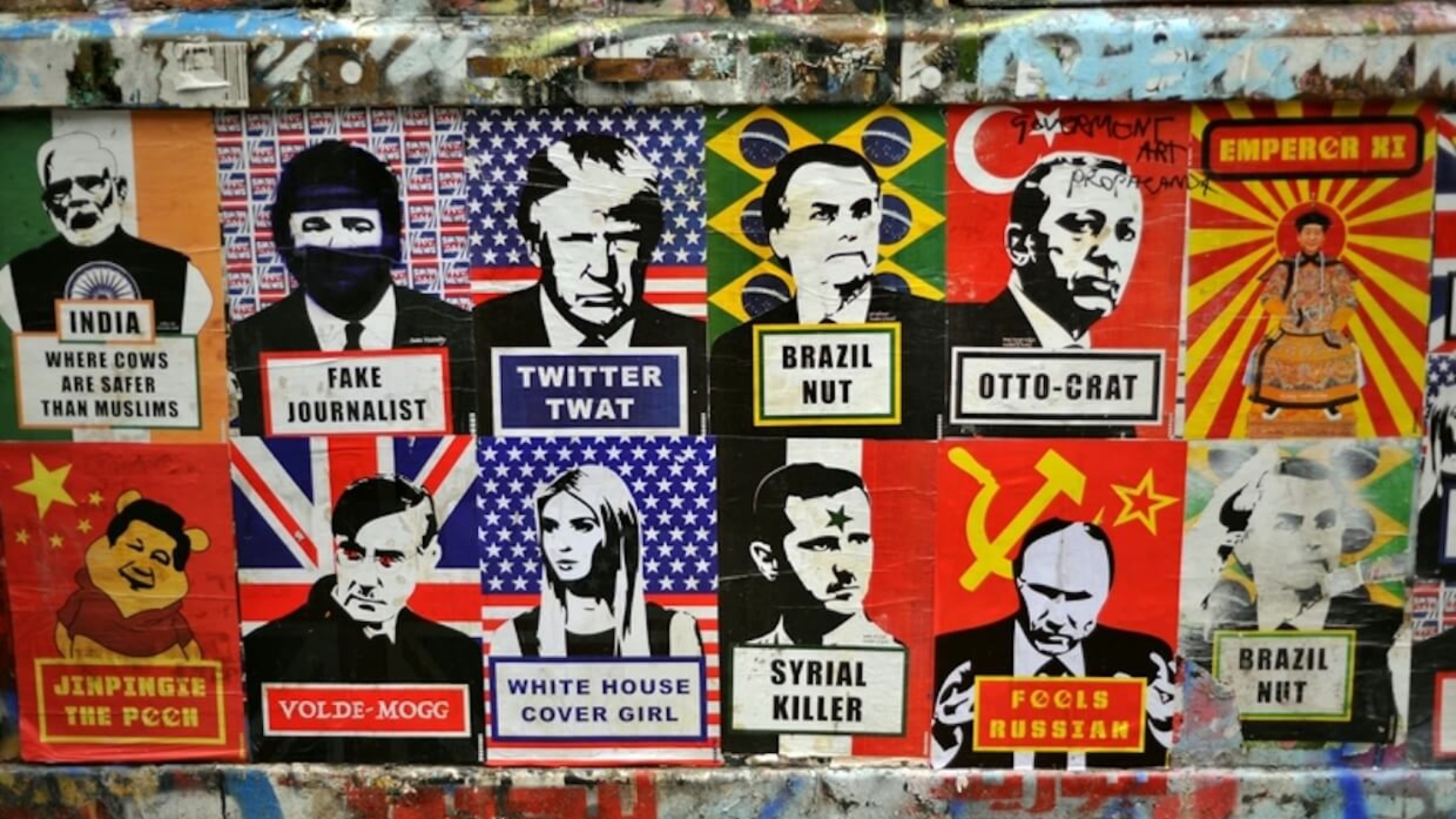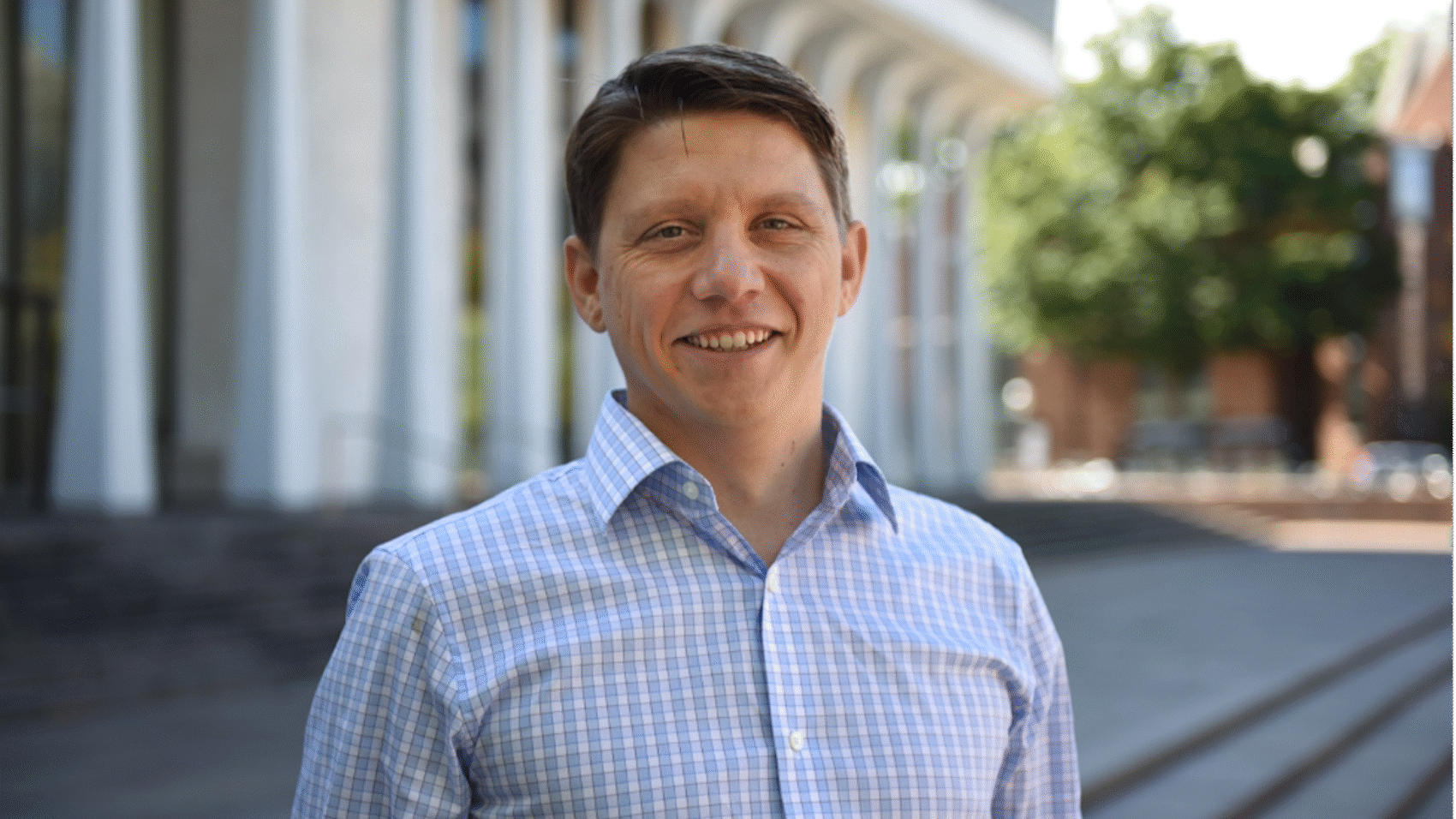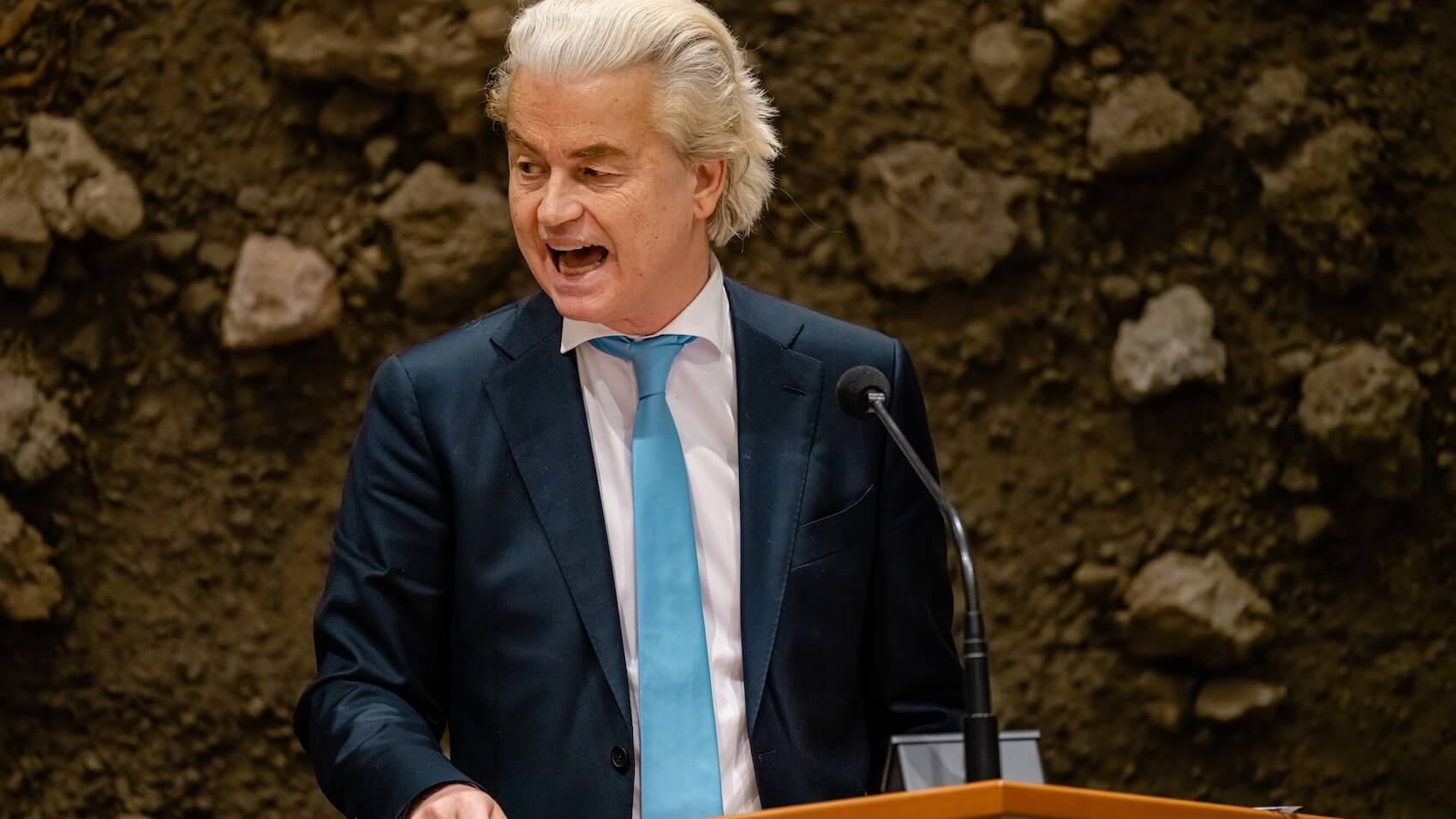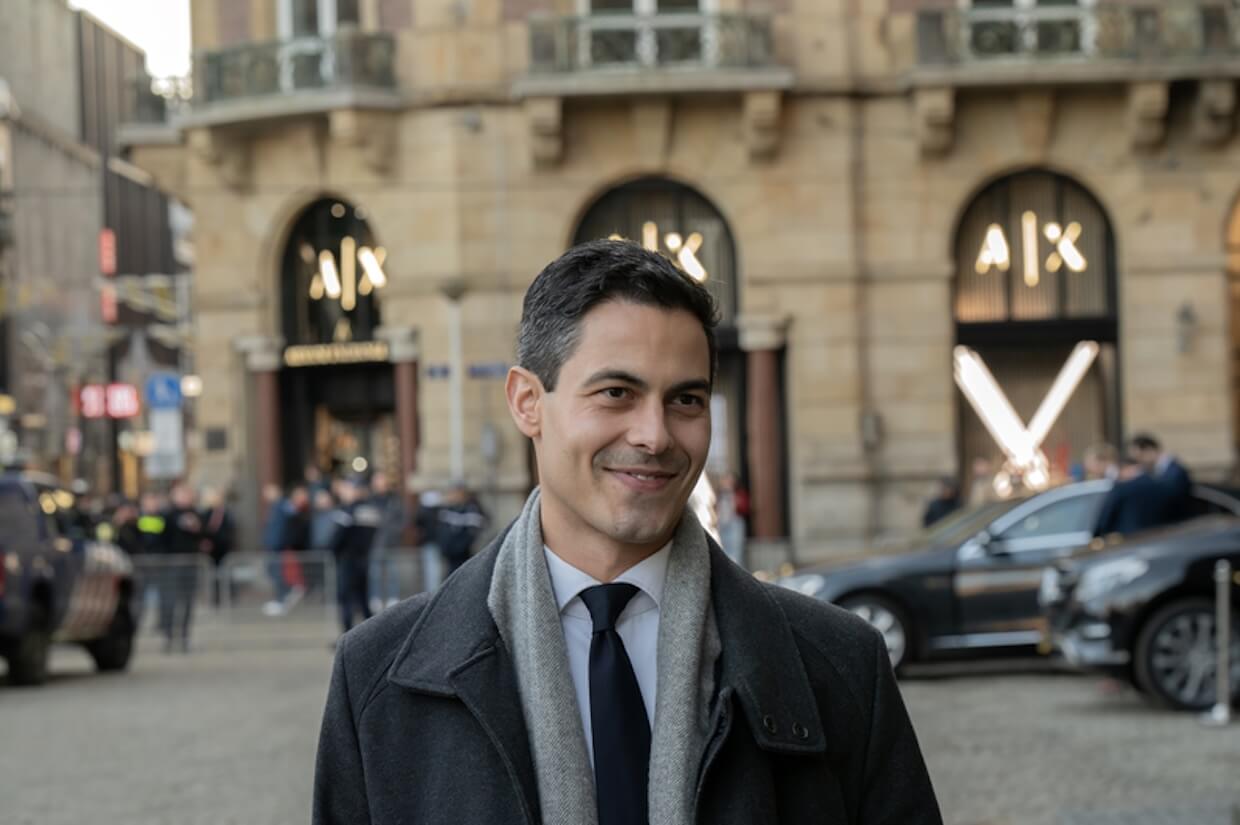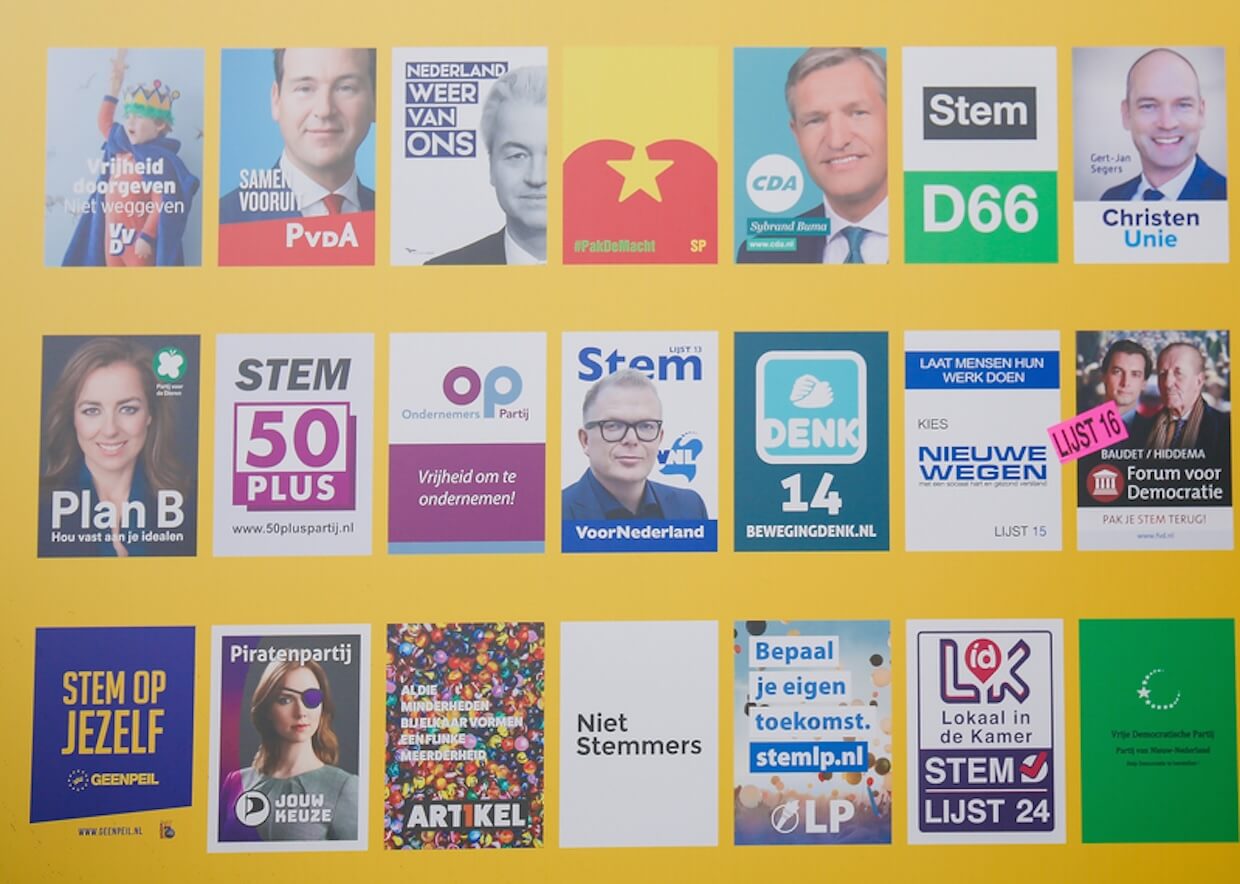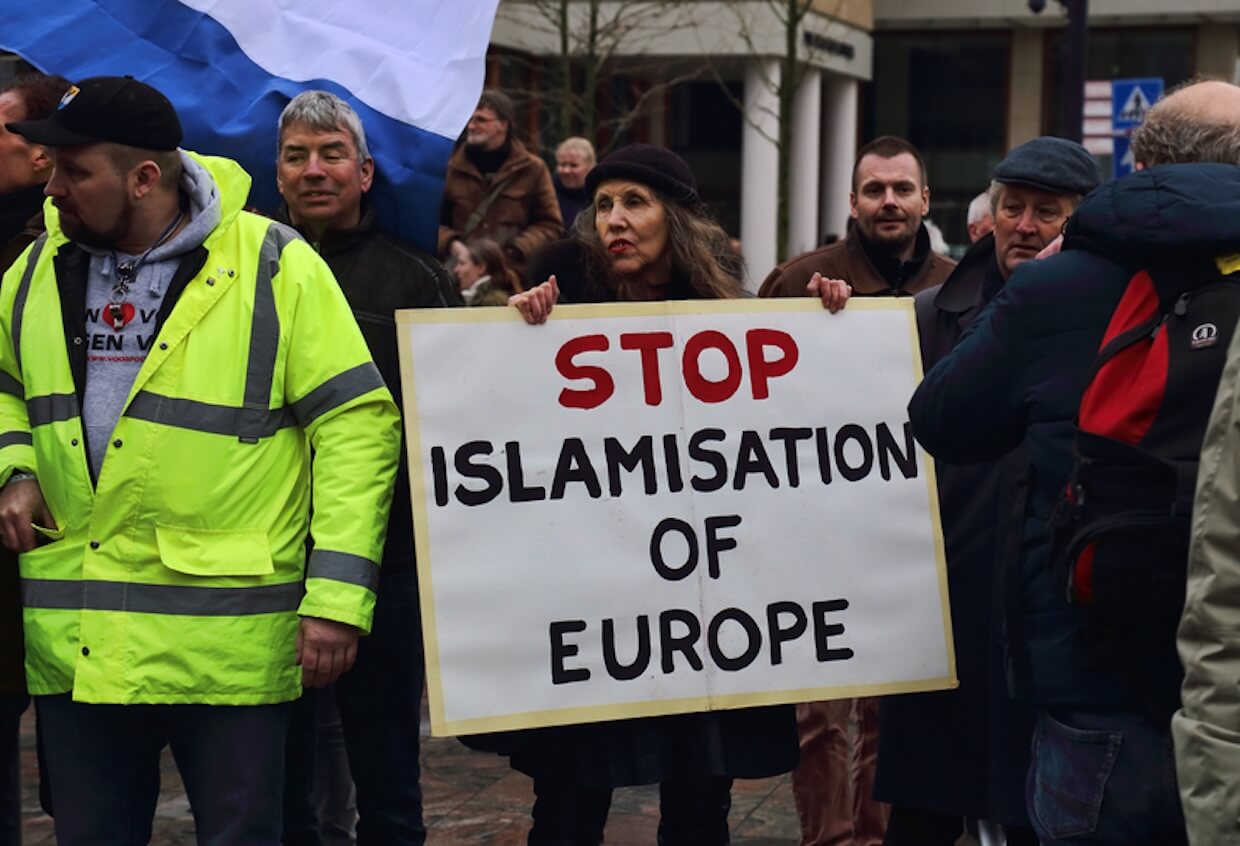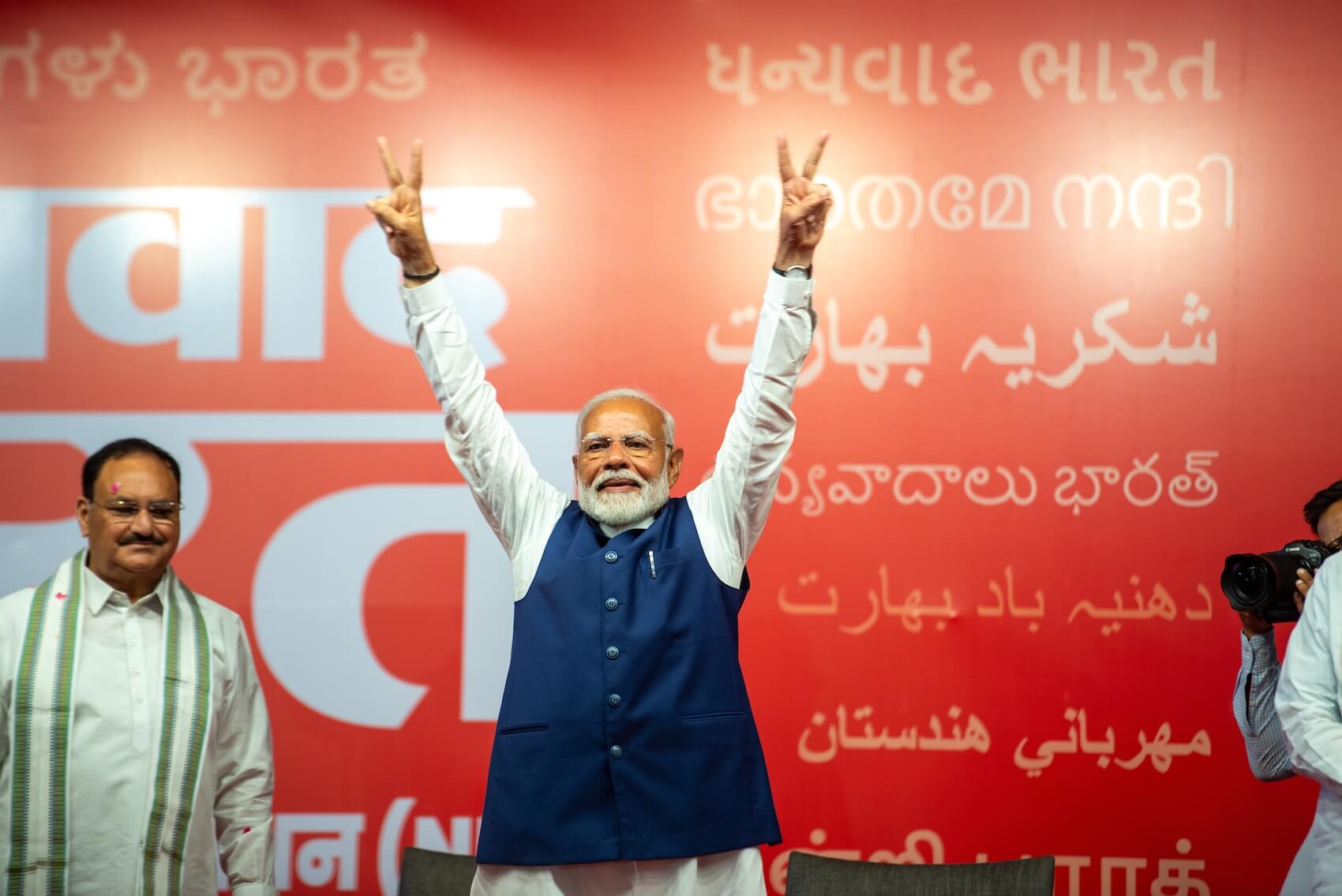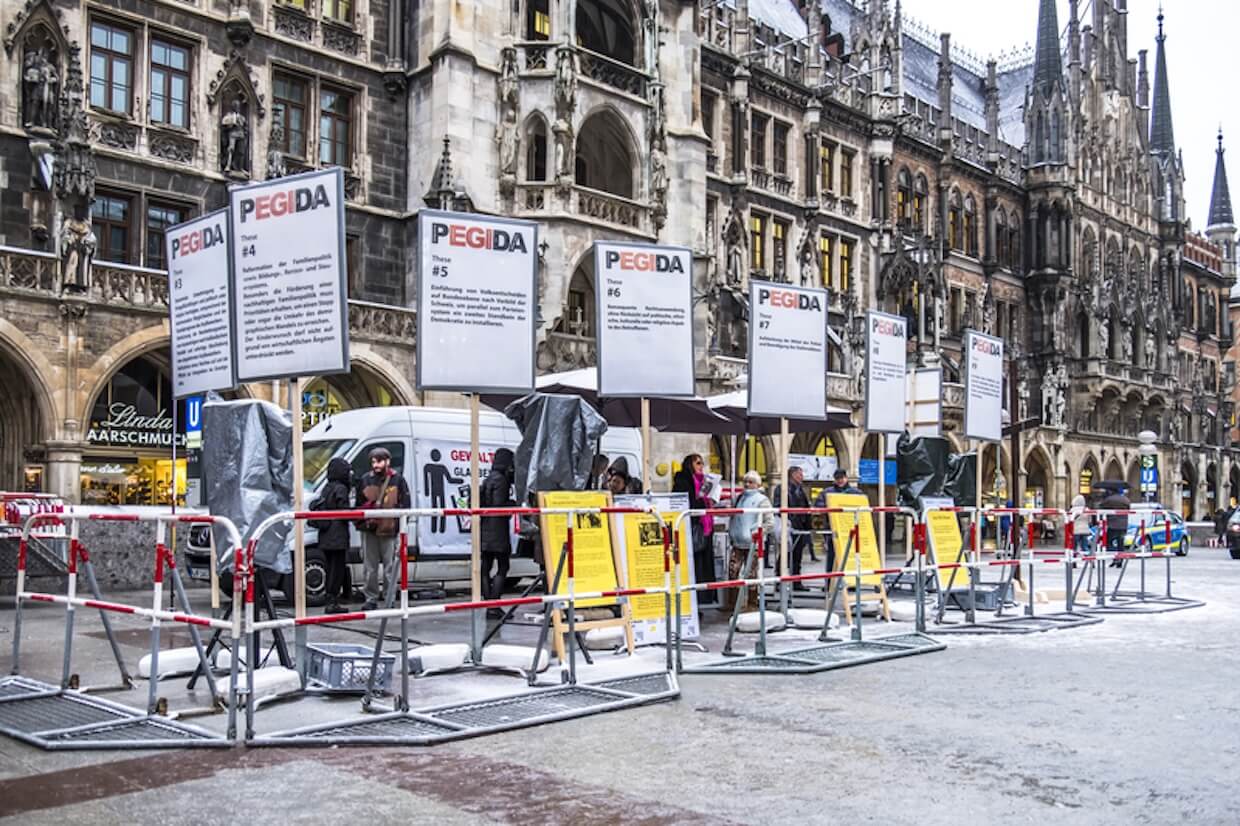Please cite as:
ECPS Staff. (2025). “Virtual Workshop Series — Session 6: Populism and the Crisis of Representation –Reimagining Democracy in Theory and Practice.” European Center for Populism Studies (ECPS). November 13, 2025. https://doi.org/10.55271/rp00118
On November 13, 2025, the ECPS, in collaboration with Oxford University, held the sixth session of its Virtual Workshop Series, “We, the People” and the Future of Democracy: Interdisciplinary Approaches. Under the skillful moderation of Professor Ilhan Kaya (Wilfrid Laurier University, Canada), the session featured Dr. Jonathan Madison, Dr. João Mauro Gomes Vieira de Carvalho, and Associate Professor Andreea Zamfira, who examined how populism both mirrors and magnifies democracy’s crisis of representation. Their analyses, complemented by insightful discussant interventions from Dr. Amir Ali and Dr. Amedeo Varriale, generated a vibrant dialogue on institutional resilience, digital disruption, and the reconfiguration of democratic legitimacy in an age of populist contention.
Reported by ECPS Staff
On November 13, 2025, the European Center for Populism Studies (ECPS), in collaboration with Oxford University, convened Session 6 of its ongoing Virtual Workshop Series, “We, the People” and the Future of Democracy: Interdisciplinary Approaches. This session, titled “Populism and the Crisis of Representation: Reimagining Democracy in Theory and Practice,” brought together a distinguished group of scholars from political science, sociology, and democratic theory to examine one of the defining questions of our age—how populism both reflects and reshapes the crisis of democratic representation.
Under the capable and engaging chairmanship of Professor Ilhan Kaya (Visiting Professor at Wilfrid Laurier University, Canada; formerly of Yildiz Technical University, Turkey), the session unfolded with remarkable intellectual rigor and fluidity. Professor Kaya’s moderation ensured a balanced and inclusive dialogue among the presenters, discussants, and participants, fostering an atmosphere of critical reflection and open exchange.
The session featured three compelling presentations. Dr. Jonathan Madison (Governance Fellow, R Street Institute) opened with “De-Exceptionalizing Democracy: Rethinking Established and Emerging Democracies in an Age of Liberal Backsliding.” His paper challenged conventional hierarchies between “established” and “emerging” democracies, arguing that institutional resilience—particularly the robustness of liberal institutions—rather than wealth or longevity, determines a democracy’s ability to withstand populist pressures.
Next, Dr. João Mauro Gomes Vieira de Carvalho (LabPol/Unesp and GEP Critical Theory, Brazil) presented “Mobilizing for Disruption: A Sociological Interpretation of the Role of Populism in the Crisis of Democracy.” His intervention explored populism as a sociological manifestation of democracy’s structural contradictions, emphasizing the interplay of economic inequality, charismatic leadership, and digital communication in the destabilization of representative institutions.
Finally, Associate Professor Andreea Zamfira (University of Bucharest) delivered “Daniel Barbu’s and Peter Mair’s Theoretical Perspectives on Post-Politics and Post-Democracy.” She advanced a sophisticated conceptual framework distinguishing between democratic and strategic populisms and called for reclaiming political science’s critical vocation amid the hollowing of democratic politics in the neoliberal era.
The presentations were followed by incisive discussant interventions from Dr. Amir Ali (Jawaharlal Nehru University, New Delhi) and Dr. Amedeo Varriale (University of East London) whose reflections broadened the theoretical and comparative scope of the session. Their critiques and elaborations inspired an engaging debate that continued into the Q&A session, where Professor Kaya adeptly guided a lively, cross-regional discussion on the transnational diffusion of populism and the institutional responses to democratic backsliding.
In sum, Session 6 stood out as an exemplary exercise in interdisciplinary dialogue—anchored by Professor Kaya’s thoughtful moderation and enriched by a diverse array of perspectives that collectively illuminated the multifaceted relationship between populism, representation, and the evolving fate of democracy in the twenty-first century.
Dr. Jonathan Madison: “De-Exceptionalizing Democracy: Rethinking Established and Emerging Democracies in an Age of Liberal Backsliding”

In his thought-provoking presentation, Dr. Jonathan Madison examined one of the most pressing paradoxes of contemporary politics: Why some established democracies have proven fragile in the face of populist authoritarianism, while certain so-called “emerging” democracies have demonstrated remarkable resilience. Drawing on a comparative analysis of the United States and Brazil, Dr. Madison challenged conventional assumptions about democratic consolidation and offered a compelling argument for rethinking how resilience is conceptualized in the age of democratic backsliding.
Rethinking Democratic Backsliding
Dr. Madison began by noting that, since the end of the Second World War, the United States has been widely regarded as the paradigmatic liberal democracy, while Brazil has struggled to maintain democratic stability amid recurring episodes of military rule and institutional volatility. Yet the trajectories of both nations under populist leadership—Donald Trump in the United States and Jair Bolsonaro in Brazil—suggest a striking reversal of expectations. Whereas Brazil has, at least so far, managed to contain and punish anti-democratic actors, the United States has continued to experience deep institutional erosion and mounting threats to liberal norms.
This observation, Dr. Madison argued, invites a critical reconsideration of the analytical divide between “consolidated” and “emerging” democracies—a divide that has long underpinned political-science typologies. He presented three key findings: First, that Brazil’s liberal institutions have proven more resilient than those of the United States; second, that liberal, rather than strictly democratic, institutions are the decisive bulwark against populist authoritarianism; and third, that the conventional distinction between established and emerging democracies fails to predict resilience in the present era of backsliding.
Liberal vs. Democratic Institutions
A central conceptual contribution of Dr. Madison’s paper lies in his insistence on differentiating between democratic and liberal institutions. Democratic institutions refer to the procedures of electoral competition—regular elections, party systems, and voting mechanisms. Liberal institutions, by contrast, include independent courts, separation of powers, oversight agencies, and constitutional protections for individual rights. According to Dr. Madison, much of the existing literature on backsliding conflates these two domains, obscuring the fact that it is liberal institutions—rather than electoral ones—that are most often targeted and eroded by populist leaders.
Populist authoritarians such as Trump and Bolsonaro, he emphasized, have rarely campaigned on overtly anti-democratic platforms. Instead, they have portrayed themselves as embodiments of the “popular will” and have weaponized democratic legitimacy against liberal constraints. In this sense, democracy has not been rejected but appropriated as a rhetorical tool for dismantling the liberal guardrails that limit executive power.
Competing Explanations: Delivery vs. Institutions
Dr. Madison situated his argument within two major explanatory frameworks in the literature on backsliding. The delivery hypothesis attributes democratic erosion to governments’ failures to provide socioeconomic benefits—declining industrialization, rising inequality, and insecurity—thereby driving citizens toward anti-system alternatives. The institutional hypothesis, by contrast, focuses on how executives exploit loopholes and weakened checks to expand power.
While acknowledging both dynamics, Dr. Madison sided primarily with the institutional explanation, albeit with two refinements: First, that liberal institutions are the true targets of authoritarian populists, and second, that institutions are not self-executing. Their survival depends on political actors’ willingness to uphold them.
The Myth of Democratic Consolidation
Turning to the broader theoretical implications, Dr. Madison questioned the enduring validity of the distinction between “established” and “emerging” democracies. The twentieth-century paradigm, he noted, assumed that consolidated democracies—those of North America and Western Europe—had evolved beyond the fragilities of their “third-wave” counterparts. Yet, as recent developments show, phenomena once associated with Latin American politics—clientelism, corruption, and executive overreach—now thrive in the very heartlands of liberal democracy.
Brazil and the United States, he argued, invert the old hierarchy. The United States, supposedly the archetype of stability, has struggled to contain populist assaults, while Brazil, an “emerging” democracy with a much shorter democratic lineage, has successfully constrained executive excesses and imposed accountability after the fact.
Case Study I: The United States
Dr. Madison’s detailed case study of the United States underscored the weaknesses of its liberal architecture. Donald Trump’s rise in 2016, framed as a crusade on behalf of the “forgotten working class,” did not initially signal anti-democratic intent. Yet, once in office, Trump expanded executive authority through hundreds of executive orders, politicized the Department of Justice, and undermined independent oversight.
Institutional responses were inconsistent and often ineffectual. While the Supreme Court occasionally blocked his initiatives, partisan loyalty within Congress neutralized both impeachment efforts and subsequent investigations. The January 6th attack on the Capitol exposed the depth of the institutional malaise: Even in the face of direct insurrection, accountability mechanisms faltered.
Subsequent attempts to hold Trump legally responsible—including constitutional challenges under the 14th Amendment—were thwarted by judicial hesitation and partisan polarization. Dr. Madison argued that such failures illustrate how unwritten norms, rather than codified constraints, underpin much of the US system—norms that can easily be disregarded when political will collapses.
Case Study II: Brazil
By contrast, Dr. Madison presented Brazil as an unexpected success story of institutional resilience. Jair Bolsonaro’s presidency (2019–2022) resembled Trump’s in its populist style and attacks on liberal institutions. Bolsonaro ruled extensively through Medidas Provisórias (provisional measures), sought to politicize law enforcement, and vilified the Supreme Federal Tribunal. At rallies, he even declared, “I truly am the Constitution.”
Yet, Brazil’s institutions withstood these assaults. Congress allowed many provisional measures to expire or heavily amended them. The judiciary—particularly the Supreme Federal Tribunal—asserted itself repeatedly against executive encroachment. As Bolsonaro attempted to undermine the 2022 election by alleging fraud in Brazil’s electronic voting system, the country’s electoral justice apparatus acted swiftly, opening investigations and reaffirming the system’s integrity.
After Bolsonaro’s defeat, accountability followed with unprecedented speed. In 2023, the electoral court barred him from office for a decade for abusing presidential powers. In 2024, prosecutors indicted him for conspiring to subvert the election through a military coup attempt—marking the first time in Brazilian history that coup plotters faced prosecution.
Explaining Divergent Outcomes
Dr. Madison identified several structural factors explaining these divergent trajectories. Institutional design, he argued, was paramount. In Brazil, provisional measures expire automatically unless Congress acts—creating built-in limits on executive decree powers. In the United States, by contrast, executive orders and emergency powers are open-ended unless Congress intervenes, which it rarely does.
Party-system dynamics also played a role. The United States’ rigid two-party polarization has fostered a “siege mentality,” discouraging intra-party accountability. Brazil’s fragmented multiparty system, conversely, allowed legislators greater independence from the executive, enabling them to restrain Bolsonaro without threatening their own political survival.
Legal culture further deepens the contrast. Brazil’s civil-law system empowers its Supreme Court to act preemptively in defense of constitutional order, while the US common-law tradition restricts courts to adjudicating concrete disputes. Finally, Brazil’s collective memory of dictatorship has shaped a constitutional architecture that codifies protections the US continues to rely on as unwritten norms.
Liberal Institutions as the True Safeguard
Dr. Madison concluded by reiterating that the distinction between established and emerging democracies is increasingly untenable. The resilience of democracy depends not on age or wealth but on the vigor of liberal institutions and the political will to defend them. The Brazilian case demonstrates that even younger democracies can adapt and respond effectively to populist threats when constitutional design, judicial activism, and institutional pluralism align.
At the same time, Dr. Madison cautioned that Brazil’s assertive judiciary now faces its own dilemma: Overreach in defense of liberalism can itself undermine democratic pluralism if it suppresses legitimate dissent. Ultimately, the challenge is to strike a balance between constraint and participation—a task that requires constant vigilance in all democracies, established or emerging alike.
Through his nuanced comparative analysis, Dr. Madison’s paper offered a powerful reminder that no democracy is exceptional, immune, or permanently consolidated. In an age of populist volatility, resilience is earned, not inherited.
Dr. João Mauro Gomes Vieira de Carvalho: “Mobilizing for Disruption: A Sociological Interpretation of the Role of Populism in the Crisis of Democracy”

In his presentation, Dr. João Mauro Gomes Vieira de Carvalho explored populism as a sociological phenomenon intimately bound to the structural crisis of modern democracy. His analysis situated populism not merely as a reaction to democratic failure but as a dynamic force that both exploits and deepens democracy’s internal contradictions.
Dr. Carvalho opened by asserting that democracy is undergoing a structural crisis, not a temporary malfunction. Populism, he argued, cannot be understood in isolation from this broader transformation of democratic systems. Rather than external threats, populist movements are symptomatic of inherent tensions between the normative aspirations of democracy—equality, freedom, and solidarity—and the systemic imperatives of capitalist societies, which operate through competition and the pursuit of particular interests.
These contradictions, rooted in modernity itself, cannot be resolved by political will alone. Drawing on the sociological insights of Claus Offe, Dr. Carvalho recalled that the mid-20th century democratic compromise—anchored in welfare-state regulation and competitive party politics—temporarily stabilized the tension between capitalism and democracy. However, the neoliberal deregulation of markets and the rise of new social movements since the 1980s disrupted that equilibrium. In his view, the global economic crisis of 2007–2008 and subsequent political realignments made Offe’s diagnosis more relevant than ever: The institutional structures that once mediated social conflict have lost legitimacy and efficacy, opening space for new, disruptive forms of populist mobilization.
Charismatic Leadership and the Production of Meaning
The second pillar of Dr. Carvalho’s argument focused on populist leadership as a form of charismatic authority that emerges precisely in times of systemic dislocation. Drawing on Max Weber’s classical concept and Ulrich Oevermann’s reinterpretations, he described populist leaders as figures who interpret social contradictions, giving them symbolic meaning and emotional coherence within a political community. Leaders such as Jair Bolsonaro in Brazil, Donald Trump in the United States, and Javier Milei in Argentina exemplify what Dr. Carvalho called disruptive charisma—a leadership style that mobilizes discontent by presenting itself as a redemptive force against corrupt elites and unresponsive institutions.
Such leaders do not merely exploit crises; they narrate them. Through simplified dichotomies between “the people” and “the elite,” they transform diffuse frustrations into moral conflicts, thereby legitimizing attacks on democratic institutions. The leader becomes both the interpreter and the embodiment of the people’s supposed will.
Digital Media and the Disruption of the Public Sphere
A central innovation in Dr. Carvalho’s framework concerns the reconfiguration of the public sphere by digital media. Social networks, he argued, have profoundly destabilized traditional forms of political communication. In the past, legacy media served as institutional gatekeepers, moderating the flow of information and maintaining a degree of discursive coherence. Digital platforms, by contrast, enable direct and immediate communication between leaders and followers—an illusion of intimacy that bypasses established mediating institutions such as political parties, journalists, and civil society organizations.
While this “direct connection” appears democratic, it is in fact highly mediated by algorithms and platform architectures designed to maximize engagement rather than deliberation. The populist leader’s ability to speak “directly” to the people through social media thus amplifies polarization and erodes the legitimacy of traditional institutions. Dr. Carvalho likened this transformation to economic deregulation: Just as markets freed from oversight can generate instability, the deregulation of communication creates a volatile and fragmented public sphere.
Populism as Mobilization Against Mediation
For Dr. Carvalho, the defining feature of contemporary populism is its mobilization against institutional mediation. Populist discourse constructs representative institutions—parliaments, courts, and the media—as obstacles to authentic popular sovereignty. By delegitimizing these intermediaries, populist leaders claim to restore democracy to “the people,” while in practice undermining the very mechanisms that sustain democratic pluralism.
He illustrated this logic through an empirical vignette from Brazil. Following Jair Bolsonaro’s defeat in the 2022 presidential election, supporters gathered outside government buildings chanting: “Get out, justice—supreme is the people.” This slogan, he noted, encapsulates the populist inversion of democratic legitimacy. The protesters demanded the removal of Supreme Court justices, not by name, but by function—attacking the institutional role itself. Their claim that “the people are supreme” asserted a direct, unmediated sovereignty that rejects the procedural and institutional framework through which democracy operates.
In this sense, the populist demand is paradoxically framed as more democratic: It invokes the name of the people to justify the dismantling of institutions designed to protect popular rule. The rhetoric of “immediate democracy” thus becomes a vehicle for anti-institutional mobilization.
Toward a Sociology of Democratic Disruption
Dr. Carvalho emphasized that his research remains part of an ongoing project aimed at developing a sociological framework for empirical investigation. His future work will explore how populist movements, particularly through digital media, reconfigure the relationship between leaders, followers, and institutions. He intends to conduct qualitative case studies examining how online mobilization interacts with the transformation of party politics—citing Italy’s Five Star Movement as a paradigmatic case of “digital direct democracy.”
He also proposed a nuanced concept of crisis as an open-ended moment of transformation rather than mere breakdown. A crisis, in his interpretation, is a juncture of potential reconfiguration—it can lead toward renewed democratization or toward authoritarian closure. Populist movements seek to occupy this liminal space, channeling uncertainty and discontent into collective action. Understanding how populist leaders interpret and operationalize such moments, he argued, is key to grasping democracy’s current vulnerability and possible renewal.
Dr. Carvalho concluded by stressing that populism should not be viewed as an anomaly or external threat to democracy but as an internal mode of contestation emerging from its structural contradictions. The interplay between capitalism’s systemic logic and democracy’s normative promises has produced recurring crises of legitimacy, which populist leaders exploit through affective communication and anti-institutional rhetoric.
His sociological interpretation reframes populism not as the pathology of democracy but as one of its revealing expressions—a mirror reflecting the unresolved tensions of modernity. By mobilizing citizens against mediation in the name of immediacy and authenticity, populist movements both expose and accelerate democracy’s ongoing transformation.
Dr. Carvalho’s intervention thus offered a rigorous and thought-provoking framework for analyzing the sociopolitical mechanisms through which populism “mobilizes for disruption” in an era where democracy’s very foundations are being redefined by digital technologies, structural inequalities, and the erosion of institutional trust.
Associate Professor Andreea Zamfira: “Daniel Barbu’s and Peter Mair’s Theoretical Perspectives on Post-Politics and Post-Democracy”
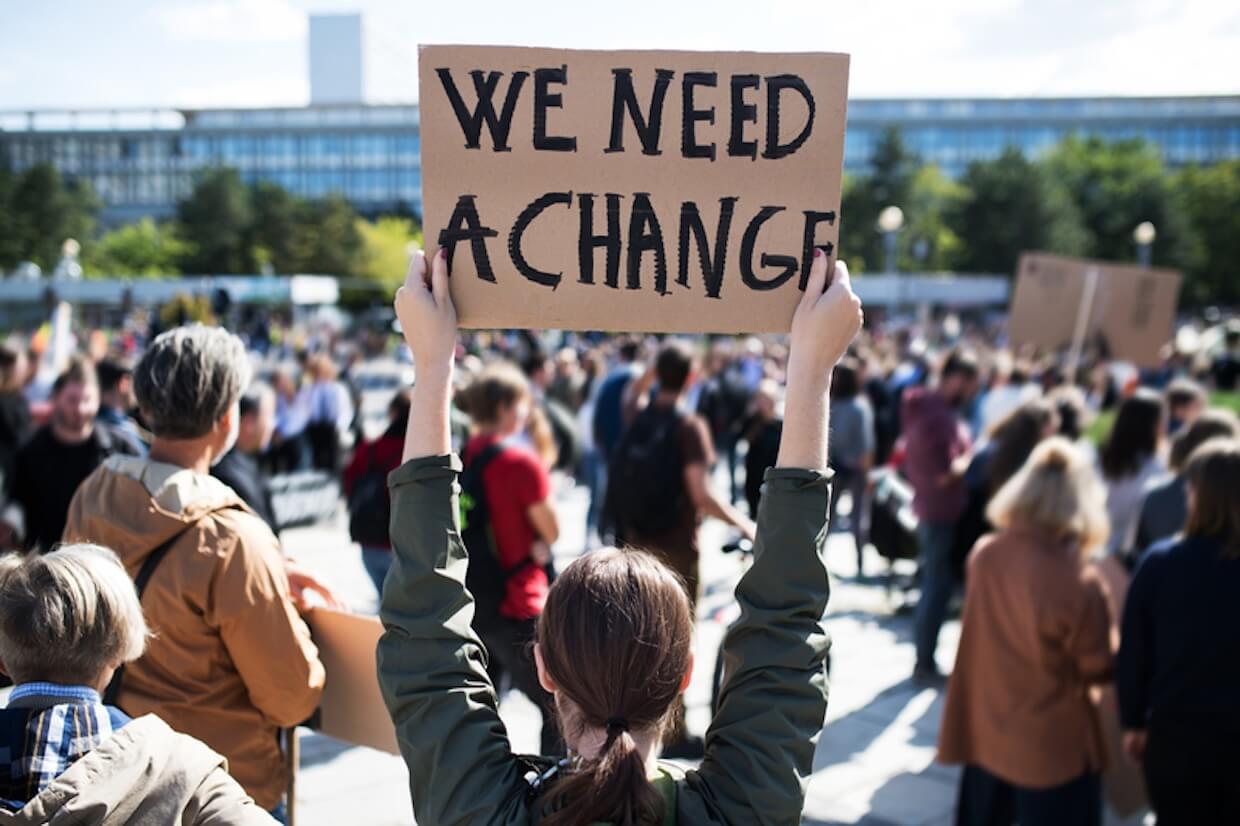
In her intellectually rich and methodologically reflective presentation, Associate Professor Andreea Zamfira advanced a powerful analytical framework for reinterpreting populism within the broader crisis of contemporary democracy. Rather than approaching populism as a pathology or deviation, she argued that it must be seen as a reaction—a symptom and sometimes a corrective—to the structural transformations that have hollowed out the meaning and substance of democratic politics.
Populism Reconsidered: Between Democratic and Anti-Democratic Forms
Dr. Zamfira began by situating her work in dialogue with previous presentations at the workshop, notably that of Dr. Carvalho. While concurring with the notion that democracy faces a structural crisis, she raised a crucial question: which populism are we addressing—the democratic or the anti-democratic? This question framed her broader argument that the contemporary conceptual landscape surrounding populism has become increasingly blurred, both in academia and in public discourse.
She noted that populism can be studied through several lenses—ideological, strategic, or discursive—but that the persistent conflation of these dimensions has led to confusion. Particularly, she distinguished between ideological (or democratic) populism and strategic populism. The former represents a normative and legitimate effort to reclaim political agency and representation in the name of the people, while the latter functions as a manipulative instrument within the spectacle of modern politics.
Citing the French political theorist Pierre Rosanvallon, Dr. Zamfira emphasized that populism—although often criticized for its anti-pluralist tendencies—can perform a democratic corrective function, exposing the deficits of representation and the alienation of citizens from political elites. In this sense, ideological populism reflects an authentic desire to re-politicize public life and re-anchor democracy in the sovereignty of the demos. By contrast, strategic populism is tied to the “spectacularization” and “theatricalization” of politics in the media age, where populism becomes a performance rather than a project.
The Positive and Negative Faces of Populism
Drawing on the works of Peter Mair, Philippe Schmitter, and Richard Katz, Dr. Zamfira reminded the audience that populism, despite its risks, may also yield positive outcomes. It can compel traditional parties—detached from society and reduced to electoral machines—to reconnect with citizens or face obsolescence. Democratic populism, in this sense, acts as an agent of renewal within a stagnant political order.
This approach, she argued, departs from the mainstream portrayal of populism as an inherently destructive or extremist force. While populist leaders and movements can indeed threaten liberal norms, ideological populism—understood as a set of ideas rather than as a strategy—offers a deeper philosophical and sociological insight into the nature of political legitimacy and popular sovereignty. For Dr. Zamfira, this theoretical differentiation is crucial for restoring balance and nuance to contemporary analyses of populism.
Revisiting Barbu and Mair: Diagnosing Post-Politics and Post-Democracy
Dr. Zamfira then turned to her two central interlocutors: Daniel Barbu, a Romanian political philosopher and historian, and Peter Mair, the late Irish political scientist. Both thinkers, she argued, provided penetrating accounts of the erosion of representative democracy—what Mair termed “the hollowing of Western democracy” and Barbu called “the absent republic.”
Peter Mair’s Ruling the Void: The Hollowing of Western Democracy (2013) was presented as a seminal work for understanding how European democracies have lost their representational vitality. Mair traced the growing gap between political elites and citizens, arguing that parties have withdrawn from their societal roots while citizens, in turn, have disengaged from formal politics. The result is a “democratic void” in which electoral mechanisms persist, but meaningful political contestation declines.
Daniel Barbu, in The Absent Republic (1999), diagnosed a parallel condition in post-communist Europe. In his account, democracy has become formally present but substantively absent: The state operates according to its own self-referential logic of power rather than the will of its citizens. Popular sovereignty, while preserved as a rhetorical principle, is emptied of real influence. The republic, in Barbu’s phrase, becomes “absent” because its institutions no longer mediate between society and power.
Dr. Zamfira suggested that despite their distinct intellectual traditions, both thinkers converge on a shared diagnosis: The weakening of the link between rulers and ruled. Their reflections articulate the broader transition from politics to post-politics—a condition of depoliticization in which fundamental political questions are displaced by managerial and technocratic decision-making—and from democracy to post-democracy, where formal procedures remain but substantive pluralism and ideological conflict erode.
The Crisis of Political Science and the Loss of Critical Function
In a particularly reflective segment, Dr. Zamfira extended Barbu’s critique to academia itself. She argued that much of contemporary political science has become complicit in the post-political condition it describes. Echoing Barbu’s contention that political science is increasingly a “discourse that accompanies power,” she lamented its drift away from critique toward technocratic neutrality.
Political science, she argued, must reclaim its critical vocation as the conscience of democracy. The discipline’s task is not merely to measure political behavior but to interrogate the structures of power that constrain democratic agency. In the current intellectual climate—marked by polarization and conceptual simplification—this reflexive and critical function is more necessary than ever.
Populism as Effect, Not Cause, of Democratic Erosion
Dr. Zamfira challenged the prevailing tendency to treat populism as the cause of democratic backsliding. Instead, drawing on both Barbu and Mair, she proposed that populism should be seen as an effect of structural democratic erosion. The rise of populist discourse reflects the profound disconnect between politics and society—a void left by depoliticized elites, bureaucratic governance, and the dominance of market rationality.
Depoliticization, she explained, transfers decision-making from elected representatives to unelected experts and administrative bodies. As Mair observed, governance becomes “about people, not by them.” In such a context, populism emerges as a reaction—a demand to restore voice, representation, and conflict to a technocratic order that has rendered citizens spectators rather than participants.
The Road to Post-Democracy
Building on Colin Crouch’s notion of post-democracy, Dr. Zamfira outlined the broader trajectory of this transformation. Post-democracy is characterized by the persistence of democratic forms—elections, parties, and constitutions—without their substantive content. Ideological contestation gives way to managerial consensus; citizens remain nominally sovereign, but real power migrates toward economic elites, corporate actors, and international institutions such as the European Union or the World Trade Organization.
Citing Eric Schattschneider’s classic distinction between government by the people (the pluralist model) and government for the people (the elitist model), Dr. Zamfira argued that Western democracies have steadily moved toward the latter since the 1990s. The transition from pluralism to elitism, she suggested, has eroded the participatory foundations of democratic life.
Reclaiming the Critical Space for Democracy
In conclusion, Dr. Zamfira issued a clear call to re-evaluate both the academic and political treatment of populism. When elitist models of democracy dominate, all populist discourses—whether democratic or authoritarian—risk being delegitimized as extremist or irrational. This conflation, she warned, blinds political science to the genuine democratic energies that may animate certain populist movements.
To recover the integrity of democratic theory, Dr. Zamfira urged scholars to re-engage with populism’s critical dimension—as a response to alienation, not merely as a threat to order—and to reclaim the discipline’s role as democracy’s critical conscience. Her intervention stood out as both theoretically rigorous and normatively committed, illuminating the necessity of nuanced reflection in a time when democracy’s form endures but its meaning is at risk of disappearing.
Discussant’s Feedback: Dr. Amir Ali

Dr. Amir Ali, Associate Professor at Jawaharlal Nehru University (India), offered a deeply engaging and intellectually expansive intervention as discussant, responding to three presentations. His comments demonstrated a remarkable comparative and theoretical breadth, drawing on experiences from India, as well as on key works in democratic theory and political economy.
Beginning with Dr. Jonathan Madison’s paper, Dr. Ali expressed broad sympathy with its analytical depth while identifying a key conceptual tension. He argued that Dr. Madison placed “too much explanatory weight” on the liberal dimension of democracy, implicitly assuming that liberal institutions could redeem democracy from its contemporary crisis. Invoking Canadian political theorist C.B. Macpherson, Dr. Ali reminded the audience that “liberal democracy” is a hyphenated idea in which the liberal element historically dominates and undermines the democratic one. This imbalance, he suggested, has led to a steady evisceration of democracy under liberal capitalism.
To reinforce this point, Dr. Ali referenced Timothy Mitchell’s Carbon Democracy (2011), arguing that the United States’ current democratic turmoil, epitomized by the Trump phenomenon, represents the “chickens of democracy coming home to roost.” The US project of exporting liberal democracy abroad, he contended, resulted in “carbon copies” of democracy—thin, depleted, and formalistic versions of a system already hollowed out at home.
While agreeing with Dr. Madison’s call to collapse the analytical divide between “established” and “emerging” democracies, Dr. Ali challenged the implicit optimism in liberal institutionalism. From his vantage point in India, he observed that constitutional institutions—such as the Election Commission—had been systematically weakened by populist-authoritarian governments. What was once a robust guardian of electoral integrity had become, in his words, “a toothless tiger.” This erosion of institutional autonomy, he argued, undermines any faith in liberal institutions as bulwarks against democratic backsliding.
Populism, Capital, and the Fractured Public Sphere
Turning to Dr. Carvalho’s sociological interpretation of populism, Dr. Ali praised the paper’s focus on the contradictions of democracy but urged a stronger integration of the contradictions of capitalism into the analysis. Populism, he argued, arises not merely from democratic tensions but from deeper economic dislocations produced by global neoliberalism—the “continuous defeat of labour by capital” over the last four decades. The populist construction of “the people,” he contended, serves to obscure these material contradictions by redirecting discontent away from structural inequality and toward cultural or institutional scapegoats.
Dr. Ali also expanded Dr. Carvalho’s discussion of the public sphere. Drawing on Jürgen Habermas’s theory of communicative rationality, he argued that the fragmentation wrought by digital media is not simply a weakening of the public sphere but its obliteration. “Social media has smashed the public sphere into smithereens,” he remarked, noting how algorithmic logics and data manipulation—exemplified by the Cambridge Analytica scandal during the Brexit campaign—have reconfigured political consciousness itself. This transformation, he warned, poses an “existential threat”to democracy, as it dissolves the conditions for collective deliberation that once made democratic politics possible.
The Question of “Good” and “Bad” Populisms
In response to Associate Professor Andreea Zamfira’s paper, Dr. Ali began with initial disagreement but ultimately expressed appreciation for her nuanced approach. He questioned her distinction between “democratic” (good) and “anti-democratic” (bad) populisms, suggesting that populism, whether left- or right-wing, tends inevitably toward authoritarianism. Citing India’s political history, he invoked Indira Gandhi’s left-wing populism of the 1970s—which culminated in the suspension of democracy during the Emergency—as an example of how populist appeals, even when grounded in egalitarian rhetoric, can precipitate democratic backsliding.
Dr. Ali’s skepticism was rooted in his observation that populism’s logic of personalization and mass mobilization undermines institutional checks and pluralist deliberation, regardless of ideological orientation. In this sense, populism’s “democratic” variants may share more structural affinities with authoritarianism than is often acknowledged.
Political Science, Technocracy, and the Loss of Critique
Dr. Ali concluded his intervention with reflections that engaged Dr. Zamfira’s critique of political science as an increasingly accommodating discipline. He agreed that the field has too often become a “discourse that accompanies power” rather than interrogates it. Echoing her concern, he called for a revival of the discipline’s critical function, arguing that the marginalization of political theory and the ascendancy of technocratic and economic approaches have impoverished both scholarship and democratic imagination.
Returning to first principles, Dr. Ali proposed a return to Aristotle’s conception of politics as the master science—the discipline that encompasses the ends of all other human activities. The displacement of politics by economics and technology, he suggested, has produced not only a theoretical crisis but also the very political vacuum in which populism thrives. “Perhaps one way of countering populism,” he concluded, “is to reread Aristotle—again and again.”
Dr. Ali’s intervention stood out for its theoretical range, comparative insight, and critical acuity. By weaving together classical political philosophy, Marxian political economy, and lived experiences from India, he illuminated how global populism reflects the intertwined crises of capitalism, communication, and democratic representation. His commentary enriched the session’s intellectual dialogue, bridging empirical realities with enduring questions about democracy’s moral and philosophical foundations.
Discussant’s Feedback: Dr. Amedeo Varriale
Dr. Amedeo Varriale delivered an incisive and reflective intervention as discussant during the session, engaging critically and constructively with the presentations. His comments combined empirical insight, theoretical clarity, and comparative perspective, particularly drawing from his background in European political studies and his familiarity with both Western and Southern European populist experiences.
Dr. Varriale began by focusing on Dr. Madison’s paper. He praised it for its methodological precision, empirical richness, and conceptual originality, noting that it offers an important contribution to the academic debate on democratic backsliding. Dr. Madison’s central claim—that liberal institutions, rather than developmental indicators such as wealth or regime maturity, determine a state’s resilience to populist authoritarianism—was, according to Dr. Varriale, both compelling and empirically well-supported.
He commended Dr. Madison’s comparative analysis between Brazil and the United States, emphasizing how the paper demonstrated the Brazilian judiciary and legislature’s stronger capacity to constrain illiberal executives compared to their US counterparts. The examples of Bolsonaro’s medidas provisórias and Trump’s use of executive orders, emergency decrees, and partisan manipulation of independent agencies, he said, vividly illustrated how populist leaders “tamper with liberal aspects of democracy” while maintaining democratic façades.
Dr. Varriale found particular value in the way the paper foregrounded liberal institutions as guardians against populist excess, suggesting that it advanced the debate beyond the more traditional focus on populism’s discursive or ideological dimensions. However, he used Dr. Madison’s findings to open a broader reflection on the decline of classical liberalism in American conservatism. He observed that the Republican Party, once rooted in liberal individualism, free markets, and civic patriotism, had under Donald Trump devolved into a populist, crypto-authoritarian movement, marked by protectionism, conspiracy thinking, and xenophobia. This ideological transformation, he argued, represented one of the most striking manifestations of how populism can hollow out long-established party traditions and erode the liberal core of democratic politics.
Polarization, Populist Cycles, and the Limits of Centrist Politics
Expanding his remarks, Dr. Varriale reflected on the polarized state of American politics, where extremes on both right and left have squeezed out centrism, classical liberalism, and social democracy. Drawing on Benjamin Moffitt’s concept of “anti-populist consensus politics,” he expressed skepticism that such a consensus could re-emerge in a society as demographically and culturally fragmented as the United States. In his view, the disappearance of a shared political middle—combined with deep divisions between metropolitan and rural America—jeopardizes the country’s ability to continue functioning as the “leader of the free world” in an increasingly multipolar order. He warned that, given these divisions, “there is no guarantee that after Trump there won’t be another Trump—or someone worse.”
Populism, Partyless Democracy, and the Crisis of Representation
Turning to the presentations by Dr. Carvalho and Dr. Zamfira, Dr. Varriale connected their insights to the work of Peter Mair and William Galston, both of whom had theorized the weakening of the representative link between citizens and political elites. He highlighted Mair’s distinction between democracy’s two pillars—popular sovereignty and constitutionalism—and argued that populism thrives by overemphasizing the former while undermining the latter. Populists, he noted, have “no issue with popular sovereignty or majority rule, but a deep aversion to the rule of law and minority protections.” This imbalance transforms democratic majoritarianism into illiberal governance.
Building on Dr. Carvalho’s sociological framework, Dr. Varriale linked this dynamic to the phenomenon of “partyless democracy,” where populist movements reject political parties as corrupt intermediaries and promote direct forms of plebiscitary participation. He drew on examples from Italy—particularly the Five Star Movement (M5S)—to illustrate how anti-elite and anti-party sentiment can morph into anti-political and anti-constitutional tendencies. The M5S’s efforts to abolish public funding for parties and drastically reduce the number of parliamentarians, he argued, risked turning politics into a domain accessible only to the wealthy and further eroding democratic pluralism.
Populism’s Dual Face: Corrective and Destructive
Dr. Varriale nuanced his critique by acknowledging, in agreement with Dr. Zamfira, that not all populisms are inherently anti-democratic. In certain historical contexts—such as Solidarity (Solidarność) in Poland or the Party of the Democratic Revolution (PRD) in Mexico—populist movements have functioned as democratic correctives, challenging authoritarian elites and expanding political inclusion. Nonetheless, he cautioned that populism’s structural anti-pluralism—its conviction that only it represents the “true people”—renders it perpetually vulnerable to authoritarian outcomes. Whether on the left or the right, populism’s exclusionary logic and hostility to institutional mediation ultimately threaten the liberal core of democracy.
In closing, Dr. Varriale reiterated that the current populist zeitgeist is best understood as the product of a longstanding tension within democracy itself—between the popular and the constitutional dimensions. Populism amplifies one at the expense of the other, promising empowerment while eroding constraint. His intervention underscored the need for renewed scholarly and civic engagement with liberal institutions, representative mediation, and pluralist values if democracy is to withstand its contemporary trials.
Presenters’ Responses
Following the discussants’ insightful interventions by Dr. Amir Ali and Dr. Amedeo Varriale, the three presenters offered their concluding reflections. Their responses were thoughtful, collegial, and self-reflective, highlighting the intellectual complementarity of their research and the productive avenues for further development that emerged through the discussion.
Dr. Jonathan Madison began by expressing deep appreciation for the discussants’ thoughtful engagement, noting that the feedback illuminated new dimensions of his comparative study on democratic backsliding in Brazil and the United States. He particularly emphasized the intellectual convergence between his own paper and Dr. Carvalho’s work, remarking that their analyses “filled in some gaps for each other.” He acknowledged that the discussion, especially the points raised about social media and its role in reshaping democratic participation, had provided an important new perspective that he hoped to incorporate in future versions of his research. Dr. Madison reaffirmed that the intersection of institutional resilience, populist behavior, and digital disruption represents a crucial frontier in understanding contemporary democracy.
Dr. João Mauro Gomes Vieira de Carvalho followed with a succinct and reflective response. He thanked both discussants for their rigorous and provocative assessments, emphasizing how the feedback would directly inform the ongoing development of his research project on populist mobilization and the structural crisis of democracy. Dr. Carvalho reiterated his appreciation for the interdisciplinary dialogue, noting that the comments had enriched his understanding of how populist discourse interacts with broader transformations in communication, capitalism, and political mediation. While he refrained from engaging in detailed debate, he emphasized that the exchange of ideas offered “something to think of and try to incorporate” into his evolving sociological framework.
Associate Professor Andreea Zamfira provided the most extensive and reflective reply, directly addressing the points raised by both discussants. She began by thanking Dr. Ali and Dr. Varriale for their rigorous critiques, describing their interventions as intellectually stimulating and fruitful for her ongoing reflections.
Responding first to Dr. Ali, Dr. Zamfira acknowledged the value of his notion of the “populist construction of the people,” which she found conceptually intriguing and potentially useful for exploring populism as a reaction to capitalism and growing economic inequality. She clarified that her earlier distinction between “good” and “bad” populism was not intended as a moral hierarchy but as an analytical shorthand for differentiating “beneficial” and “pernicious” functions of populism within democratic regimes. Drawing on scholars such as Peter Mair and Richard Katz, she reiterated that certain populist movements can perform corrective functions by reactivating political participation and exposing representational deficits.
Addressing the discussion on the pandemic and populist governance, Dr. Zamfira agreed that populist leaders often managed the crisis poorly but contextualized this within a pre-existing technocratic drift in policymaking. Long before the pandemic, she argued, political decision-making had increasingly been justified through the rhetoric of urgency, expertise, and efficiency, rather than representation and deliberation. The pandemic, therefore, intensified rather than initiated this trend, placing populists in a reactive position against an already depoliticized public sphere.
She also strongly endorsed Dr. Ali’s call to restore the autonomy and critical function of political science, warning against its transformation into a technocratic discourse that “accompanies power.” For Dr. Zamfira, reclaiming this critical vocation is essential to understanding — and not merely diagnosing — democracy’s structural crisis.
Turning to Dr. Varriale’s comments, Dr. Zamfira nuanced her position on populism’s relationship with minorities and constitutionalism. While conceding that certain populist movements exhibit exclusionary, nationalist, or xenophobic tendencies, she argued that not all populisms are built on exclusion. In some cases, populism can function as a logic of articulation between the people and elites, incorporating marginalized groups into the political community. This inclusive variant, she noted, aligns with the interpretations of Pierre Rosanvallon and Peter Mair, who recognize populism’s potential to expand democratic participation under specific contexts.
In conclusion, Dr. Zamfira reiterated that populism should be understood as a symptom of democracy without a demos — a response to a representation void created by institutions that have lost their ability to reflect social expectations. Her closing reflections synthesized the session’s debates into a powerful theoretical statement: populism, far from being a monolith, represents the dynamic interplay between crisis, representation, and the enduring struggle to reclaim democracy’s social foundation.
Q&A Session

The Q&A session unfolded as an intellectually vibrant continuation of the day’s presentations and discussions. It deepened the exploration of the transnational dimensions of populism, the contextual dynamics of authoritarian drift, and the institutional and cultural factors shaping democratic resilience. The conversation was animated by thoughtful exchanges among the moderator, presenters, discussants, and audience members.
Opening the floor, Dr. Ilhan Kaya posed a fundamental question that framed the discussion: Is there a broader contextual or historical moment that explains the simultaneous rise of populist and authoritarian governments across diverse political systems—from India to the United States, from Turkey to Hungary and Brazil? He further inquired whether populism could be understood as a form of political “contagion,” spreading across borders through inspiration and imitation.
Responding first, Dr. Amir Ali argued that the post-2008 global financial crisis served as a decisive structural backdrop for the surge of populist movements. He identified 2016 as a symbolic turning point — the year of Donald Trump’s election and the Brexit referendum — that consolidated this wave. According to Dr. Ali, the economic dislocation of the late 2000s combined with mounting disillusionment toward neoliberal governance to produce fertile ground for anti-establishment politics. Populism, he suggested, emerged as both a reaction to economic precarity and a symptom of democratic malaise.
Building on this, Dr. Amedeo Varriale emphasized that populism’s spread has not been confined within national boundaries but has often evolved through transnational emulation. Drawing on examples from Central and Eastern Europe, he observed how leaders like Viktor Orbán in Hungary have inspired similar populist movements elsewhere, notably in Romania, where nationalist actors have consciously imitated Orbán’s rhetoric and political strategies. For Dr. Varriale, this demonstrated that populism functions as a transborder discourse, traveling through networks of ideological affinity, media exposure, and strategic learning.
Expanding the discussion, Dr. João Mauro Gomes Vieira de Carvalho introduced a sociological perspective, situating the populist wave within two interconnected global transformations: The economic crisis and digitalization. These processes, he argued, have created quasi-universal conditions—economic insecurity and the transformation of communication—that enable the proliferation of populist styles of leadership. Yet, Dr. Carvalho stressed that the expression of populism remains nationally contingent. The global conditions may be shared, but the ways in which populist movements interpret and adapt them depend on domestic political histories, institutional configurations, and leadership dynamics. His intervention underscored the necessity of combining structural explanations with detailed empirical analysis to grasp populism’s heterogeneous manifestations.
Memory, Institutions, and the Lessons of Dictatorship
ECPS’ Executive Chair Selcuk Gultasli directed a pointed question to Dr. Jonathan Madison, asking about the role of collective memory—specifically Brazil’s memory of military dictatorship—in reinforcing democratic resilience, in contrast to the United States, which lacks such a historical experience. Dr. Madison’s response highlighted the institutional legacy of Brazil’s 1988 Constitution, deliberately crafted to prevent a recurrence of authoritarianism. This historical consciousness, he explained, has endowed Brazilian democracy with a stronger normative and institutional defense against executive overreach. He contrasted this with the American political culture, where the prevailing belief that “it can’t happen here” fosters complacency toward democratic erosion.
Dr. Madison noted that Bolsonaro’s glorification of the military past ironically reinforced institutional vigilance, prompting legislative and judicial bodies to codify new legal protections against threats to democracy. By contrast, the United States’ absence of a lived experience of dictatorship has contributed to a weaker reflex of institutional self-preservation in the face of populist challenges.
The Trump Factor and Republican Conformity
Returning to the American context, Dr. Ilhan Kaya inquired about the Republican Party’s accommodation of Donald Trump, despite opposition from prominent figures like George W. Bush and Mitt Romney. Dr. Madison responded by emphasizing the structural and electoral logic of partisanship in the US: Once Trump redefined the Republican base, dissent became politically untenable. The survival instincts of legislators—dependent on party nomination and voter loyalty—made resistance a “losing strategy.” Those who opposed Trump, he observed, “are no longer in the party or in politics.” In a two-party system, the inability to form new right-wing alternatives, unlike in Brazil’s multi-party setting, has entrenched Trumpism within the Republican mainstream.
Dr. Amir Ali concluded this exchange with a literary reflection, recalling Sinclair Lewis’s 1935 novel It Can’t Happen Here, which envisioned an American demagogue eerily resembling Trump. The reference served as a sobering reminder that the specter of authoritarian populism in liberal democracies, once thought impossible, has long been imaginable—and remains profoundly relevant today.
Conclusion
Session 6 of the ECPS–Oxford Virtual Workshop Series offered a rigorous and multidimensional examination of the intricate relationship between populism and democracy’s representational crisis. Across the session’s three presentations and two discussant interventions, a coherent analytical thread emerged: Populism is not an external aberration but a constitutive symptom of democracy’s structural tensions. The dialogue underscored that the populist moment must be understood as both a mirror and a magnifier of the democratic malaise that stems from the erosion of liberal institutions, the commodification of politics, and the fragmentation of the public sphere.
Dr. Jonathan Madison’s comparative analysis of Brazil and the United States reconceptualized democratic resilience beyond the simplistic dichotomy of “established” and “emerging” democracies. His emphasis on the strength of liberal institutions—rather than developmental or historical pedigree—highlighted how institutional design and political will determine the capacity to withstand populist incursions. In contrast, Dr. João Mauro Gomes Vieira de Carvalho’s sociological approach situated populism within the structural contradictions of modernity, showing how capitalist imperatives and digital communication jointly destabilize traditional forms of political mediation. Finally, Associate Professor Andreea Zamfira extended this analysis into the domain of democratic theory, distinguishing between ideological (democratic) and strategic (instrumental) populisms, and urging a re-politicization of democracy through renewed scholarly critique.
The discussants, Dr. Amir Ali and Dr. Amedeo Varriale, deepened the debate by foregrounding global and comparative perspectives. Dr. Ali’s intervention emphasized the intersection of populism with neoliberal capitalism and the digital disintegration of the public sphere, while Dr. Varriale illuminated populism’s ambivalent role as both a democratic corrective and a vehicle for illiberal consolidation. Together, their insights reinforced the view that populism’s endurance reflects a deeper legitimation crisis rather than a transient political aberration.
Ultimately, Session 6 revealed that the future of democracy depends on restoring the delicate balance between popular sovereignty and institutional constraint. Defending liberal institutions is necessary but insufficient unless paired with a genuine effort to revive representation, pluralism, and critical engagement. Populism, in this light, serves as both a warning and a potential catalyst—an invitation to reimagine democracy not as a static form but as a living, contested process in need of perpetual renewal.






